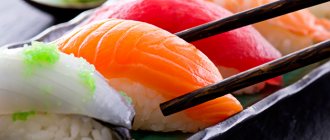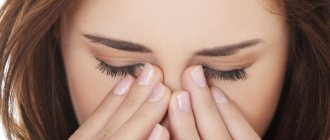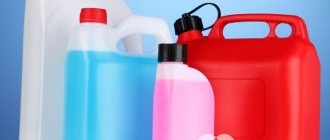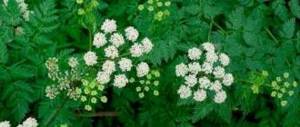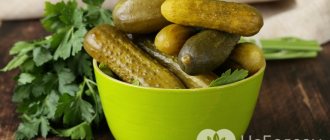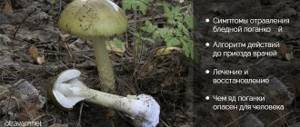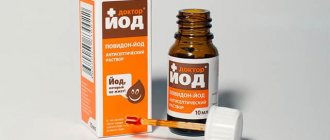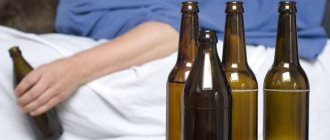How does henbane poisoning occur?
Eating any part of henbane is dangerous to human health. The grass seeds are confused with poppy seeds, and the roots with parsley rhizomes. The level of poison in them is different. The degree of poisoning depends on which element of the plant is consumed.
Intoxication occurs when henbane is collected for the preparation of medicinal substances. Any unprotected contact with the plant leads to the penetration of harmful substances into the human body. Honey collected from flowers, smoke from a fire, or milk from an animal that ate this grass will be harmful.
Henbane poisoning occurs as a result of the effects of deadly alkaloids on the central nervous system. As a result of the activity of toxins, a person experiences respiratory paralysis and hallucinations. If first aid is not provided to the victim in a timely manner, severe consequences for the body, including death, occur.
General characteristics of the plant
Henbane belongs to the nightshade family. There are also popular names - stupid grass, blekota, scab, rabid. It is so poisonous that in the past it was often used to create toxic substances. In addition, it causes hallucinations, in particular, the feeling of flying, so in the Middle Ages it was used by “witches” to create a special ointment that helped them “attend” the Sabbath. Warriors consumed the plant before battle to reduce pain and increase their ferocity to a berserker state.
Henbane is found throughout almost all of Eurasia and North Africa. Most often in the wild - in vacant lots, in alleys, near landfills and transport lines.
Externally, it is a plant 20–140 cm high, covered with small fluff - sticky fine hairs. It has an unpleasant aroma. The large, off-white, funnel-shaped flowers with 5 petals have purple veins and a black interior. It is harvested during the flowering period - from June to August, since it is at this time that its healing and poisonous properties are most clearly manifested.
Use of henbane in medicine
Despite the high risks of poisoning, this representative of the nightshade family has found wide use in therapy. Currently, active substances obtained from the plant are included in many pharmacological preparations.
Areas of use:
- Elimination of pain of various origins.
- Hemostatic for significant wounds.
- Relieving spasms of smooth muscle fibers.
- Normalization of the gastrointestinal tract.
- Ulcerative formations in the stomach.
- Reducing the frequency of bronchial asthma attacks.
- Warming up joints for rheumatism, arthritis, bone tuberculosis.
The therapeutic effect is based on the composition. The plant contains:
- hyoscyamine;
- scopolamine;
- atropine.
The mineral complex is diverse - bromine, selenium, magnesium, potassium, lithium, molybdenum, copper.
You should not collect henbane yourself - failure to comply with safety precautions easily leads to poisoning.
Scope of application in folk medicine
There are many recipes in which dope and belladonna are used along with blekota. Treatment is usually aimed at reducing asthma attacks, rheumatic pain, and flu aches.
Healers willingly prepare compounds that help with various pathologies. But it should be remembered that an overdose of alkaloids, which are present in high concentrations in the plant, contributes to the development of irreversible glaucoma as a result of an increase in intraocular pressure. It is strictly forbidden to use decoctions and ointments for patients with problems of the cardiovascular system, a pregnant or breastfeeding woman.
If for some reason henbane therapy is necessary, it is not advisable to use traditional methods. It is much safer for your health to consult a doctor and take the medications prescribed by him, strictly following the recommendations.
Symptoms of henbane poisoning
Symptoms of henbane poisoning depend on the amount of the plant consumed. In mild form, signs of intoxication appear within 20 to 30 minutes. Since harmful toxins affect the nervous system, the functioning of almost all organs occurs.
Signs of intoxication:
- Dryness of the mucous membranes of the oral cavity, difficulty swallowing;
- Hoarseness of voice, slurred speech;
- Visual impairment;
- Headache;
- Disorientation in space.
In severe poisoning, symptoms become acute. The person is overexcited. Loss of coordination is accompanied by convulsions. The victim experiences auditory and visual hallucinations.
The danger of black henbane for humans lies in toxins that can have an inhibitory effect on respiratory function. As a result of its termination, a person may die. If such symptoms occur, the victim must receive immediate assistance and be hospitalized.
Area
Black henbane is unpretentious. It grows almost everywhere, but is most widespread in the following countries and continents:
- North America,
- Australia,
- countries of Central Asia,
- Baltics,
- Ukraine,
- countries of Western Europe,
- some African countries.
In Russia, this poisonous plant has taken root everywhere except the northernmost regions. It prefers fertile soils, but, in principle, it does well in less comfortable conditions.
Places where you can see henbane are garbage heaps, vacant lots, the edges of fields and vegetable gardens, along highways (like many wild plants). It hardly grows densely, mostly only in small groups or singly.
In nature, there are several types of henbane related to black henbane: tiny, reticulated, red, poisonous and white henbane. Each of these plants is poisonous.
First aid and treatment of intoxication
First medical aid to the victim must be provided before the arrival of doctors. It is aimed at ridding the human stomach of the remnants of henbane grass.
- Gastric lavage
Since natural vomiting is absent in case of henbane poisoning, in adults it must be induced artificially by pressing on the root of the tongue. In children, such actions are carried out only through a probe. To cleanse the stomach, a person is given plenty of fluids. Potassium permanganate or activated carbon can be added to the solution. Repeat the procedure until clean wash water is obtained.
- Purgation
Intestinal dysfunction in case of henbane poisoning is also not observed, so the victim is given a laxative or given a cleansing enema.
- Sorbents
After cleansing the stomach, a person must be given medications aimed at collecting toxins - Smecta, Enterosgel, White Coal, etc.
Full treatment of henbane poisoning is carried out in the hospital. Initially, the patient is administered the antidote Proserin. If a person is overly excited, he is relieved of nervous tension with Diphenhydramine or Aminazine. Tachycardia is eliminated with Inderal. Antipyretic and diuretic tablets are used. In case of respiratory arrest, resuscitation measures are carried out.
The duration of treatment for poisoning of the body depends on the amount of poison consumed and the physical condition of the person. Typically, therapy lasts at least 10 days.
Chemical composition of belladonna
For the production of medicines, the leaves of the plant are most often used, and a little less often the roots and flowers. Belladonna leaves contain a complex chemical composition. These are alkaloids (atropine, hyoscyamine, scopolamine), phenolcarboxylic and oxalic acids, hydroxycoumarins, flavonoids, non-cyclic hydrocarbons and volatile bases. The alkaloids cushygrin and radobelin were found in the roots of the plant.
In homeopathy, medicinal preparations, when used correctly, relieve pain and muscle spasms. The effect of the plant on the body is due to the content of highly active alkaloids in its chemical composition. Medicinal preparations of belladonna and its alkaloids have found their use in the treatment of bronchial asthma and spasmodic cough.
Consequences and prevention
With timely and complete treatment for henbane poisoning, there are no consequences for the body. Therapy lasts a long time, but after it the victim fully recovers.
Possible complications:
- Mental disorders;
- Exacerbation of liver diseases, development of hepatitis;
- Allergic reactions;
- Headaches, frequent migraines.
There are cases when, with minor consumption of henbane, the poisoning went away on its own, but for a long period the person in this case was accompanied by nervous disorders. The most terrible complications are considered to be death due to paralysis of the respiratory tract or vascular failure. To avoid situations of henbane poisoning, precautions should be taken.
Recommendations:
- All work on collecting and planting plants should be carried out using protective equipment;
- Introduce children to the appearance of poisonous herbs, explain their danger;
- Remove poisonous grasses growing near playgrounds;
- Do not eat herbs that are unfamiliar in their properties;
- Do not independently prepare medications or self-medicate.
Indications for the use of belladonna
Homeopathic belladonna differs significantly from herbal preparations. There are no side effects, and if they occur, it is most likely due to non-compliance with the dosage. Previously, in homeopathy, belladonna-based preparations were used for stress, anxiety, and convulsions. Today, the indications for the use of belladonna are more extensive.
Interesting! In order to use belladonna belladonna raw materials, an aqueous, alcoholic, condensed or aqueous-alcoholic extraction is prepared, which is used in various branches of medicine. Atropine sulfate acts as an antidote.
So, homeopathic belladonna is indicated for the following diseases:
- Fever and severe pain. Preparations based on this plant are a good remedy for reducing fever after hypothermia or overheating, as well as throbbing pain that is a consequence of inflamed skin.
- Cough and sore throat. Homeopathic belladonna is prescribed for flu and colds, but it is most effective in treating coughs and sore throats. Due to its antispasmodic effect, belladonna relieves bronchospasm and suppresses the activity of the glands of the mucous membrane.
- Women's diseases. Belladonna-based suppositories are often prescribed by gynecologists for uterine spasms, painful menstruation, and to stimulate labor. Belladonna is also a useful remedy during menopause, when a woman experiences stress and violent anger, uterine bleeding, and heavy vaginal discharge.
- Neurological problems. Belladonna decoction is used to treat symptoms of Parkinson's disease and vegetative-vascular dystonia. In addition, belladonna medications are used for depression and weakening of muscles caused by cerebral palsy.
- Eye diseases. Belladonna tincture, which is made from the leaves of the plant and 40% alcohol, is used in ophthalmology. The product relieves irritation and inflammation of the eyes, reduces photosensitivity, throbbing pain and dryness of the cornea. Belladonna tincture is included in most eye drops.
- Diseases of the gastrointestinal tract. The plant eliminates the symptoms of gastritis, gastrointestinal spasms, and intestinal colic.
- Hypertension. Homeopathy for high blood pressure suggests belladonna. It is prescribed for throbbing headaches and sudden changes in blood pressure. The drugs have a gentle effect on the body and do not cause side effects. Treatment will be aimed at eliminating the cause, not just reducing symptoms.
Video: what is henbane
Read further:
Aminazine poisoning - symptoms of acute overdose
How to give a pear enema at home
Hepatitis C, symptoms and treatment
How to properly detoxify the body?
Overdose of sleeping pills
